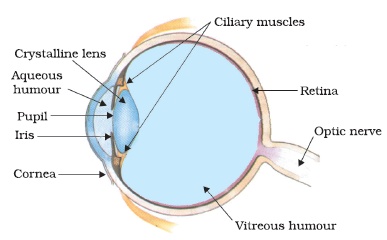HUMAN BODY PARTS
(Part 4)
In the previous lecture we have study that human brain and its Anatomy. The adult human brain is a 1.3 kg mass of pinkish-gray jellylike tissue made up of approximately 100 billion nerve cells, or neurons.
Brain is very complicated and it appears as three connected parts; the cerebrum, the cerebellum, and the brain stem. Two other major parts also exists which are thalamus and the hypothalamus.
EYE
Eye is very important part of any living object in this universe. It helps to vision, analysis, and many more things for any living objects. Without eye of an object life is miserable. Eye is the light-sensitive organ of vision in animals. The eye of various species vary form simple structures, capable only of differentiation between light and dark, to complex organs that can distinguish tiny variations of shape, color, brightness and distance. The function of the eye is to translate the electromagnetic radiation of light into patterns of nerve impulses that are transmitted to the brain.

HUMAN EYE
An eye is an organ of vision that detects light. Different kinds of light-sensitive organs are found in a variety of organisms. The simplest eyes do nothing but detect whether the surroundings are light or dark, while more complex eyes can distinguish shapes and colors. Many animals, including some mammals, birds, reptiles and fish, have two eyes which may be placed on the same plane to be interpreted as a single three-dimensional “image” (binocular vision), such as in rabbits and chameleons.
That was about the Eye. We have seen the different advantages of Eye for any living object and especially for human life. Without the Eye Human life or any living object life is very difficult. In the next lecture we will discuss about the anatomy of Human Eye briefly.



